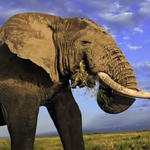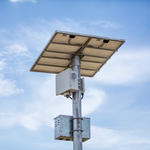Partnering with Cisco Systems to improve real-time connectivity for a real-time response to poaching
In response to the threat of increased poaching and the challenge that many protected areas in Africa lack adequate communication connectivity for rangers to detect and prevent poaching attacks before they occur, WWF, Cisco Systems, FLIR, Game Rangers International, and the Zambian Department of National Parks and Wildlife (DNPW) formed a collaboration in 2018. This concept—called Connected Conservation Project—is aimed at using innovative advances in communication and surveillance technologies to be applied in tackling this poaching threat, stopping illegal fishing, and minimizing human-wildlife conflict. The ultimate goal of this project is to build the capacity for long-term operation of the modern surveillance and communication infrastructure installed in Zambia’s Kafue National Park ecosystem to improve security for wildlife species targeted by poachers and illegal fishers.
In late 2018, WWF and partners began engineering a first-of-its-kind security system using thermal camera technology at Lake Itezhi-Tezhi on the border of Zambia’s Kafue National Park. Poachers use the lake to cross into the park at night to hunt elephants and other wildlife congregating at the water source, and people often illegally fish after dark. Using thermal cameras, WWF and partners engineered a “virtual fence” across the lake, enabling rangers to monitor the movement of boats into and out of the park’s lake boundary it in ways never before possible. To use this new technology in apprehending poachers in real-time, WWF and partners launched what is likely Africa’s first marine anti-poaching unit. These rangers monitor the lake at night by boat, using FLIR thermal cameras to guide them in the dark, and a newly upgraded communications network that allows them to communicate with each other in real-time when poachers are spotted. With the system now in place, WWF is training rangers and local partners to make the most of this breakthrough technology, and the system continues to prevent the poaching of elephants and other wildlife by identifying and alerting rangers of illegal activity day and night.
This project in Kafue is an example of conservation beginning to leverage the “internet of things”—the network of physical devices that are connected to the internet and each other so they can exchange data. Cisco helped create the communications network that allows these cameras and sensors to function and transmit data to a server at the control room, where it can be processed, analyzed, and presented to the rangers in a unified way. The system is now sending automated alerts to the control room but in time they could go directly to patrols, along with GPS coordinates of the possible illegal activity, adding a layer of transparency to the project and helping to maximize the impact a small force of rangers can have.





























 Eric Becker
Conservation Engineer, Wildlife Conservation Program
Eric Becker
Conservation Engineer, Wildlife Conservation Program
 Colby Loucks
Vice President, Wildlife Conservation Program
Colby Loucks
Vice President, Wildlife Conservation Program